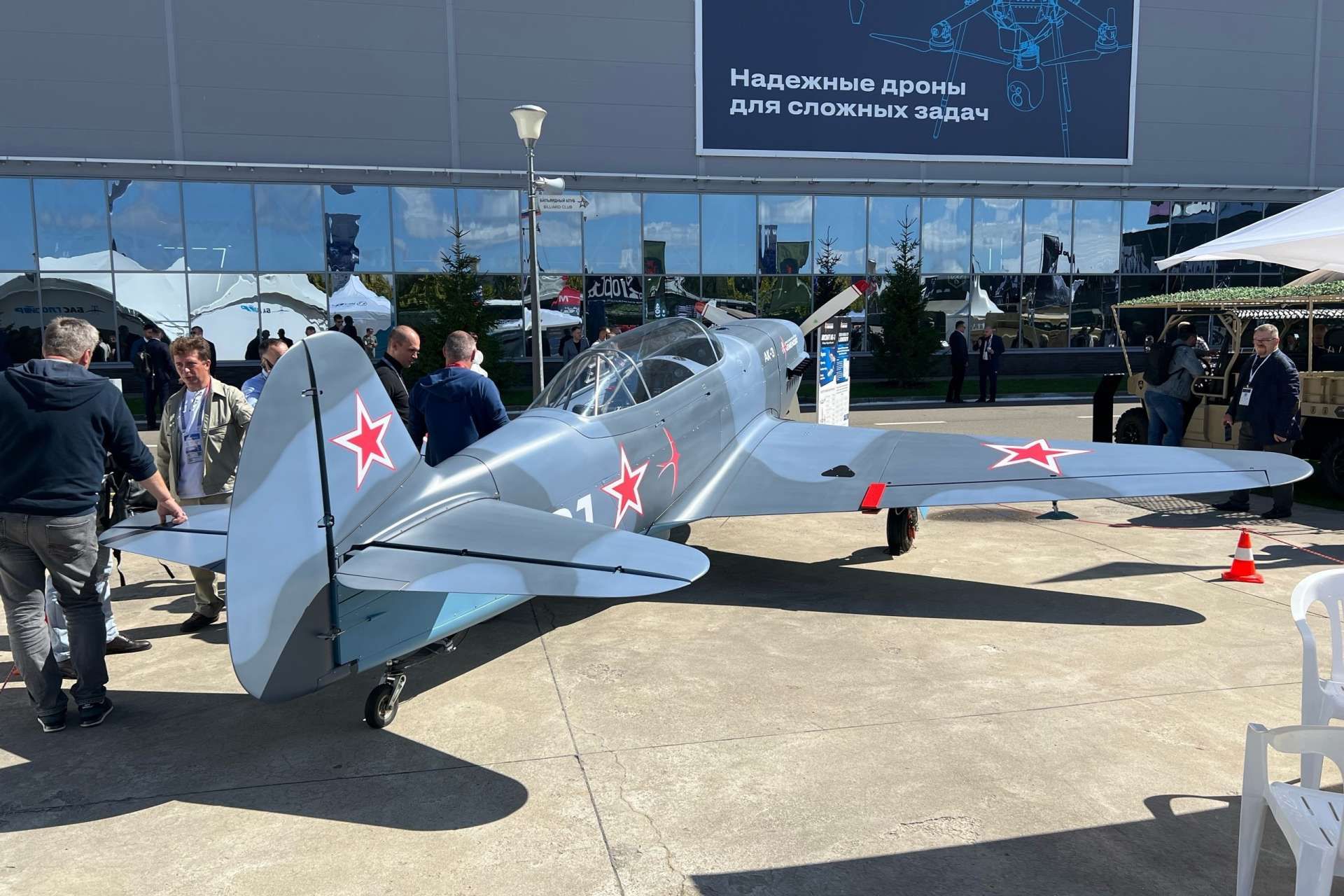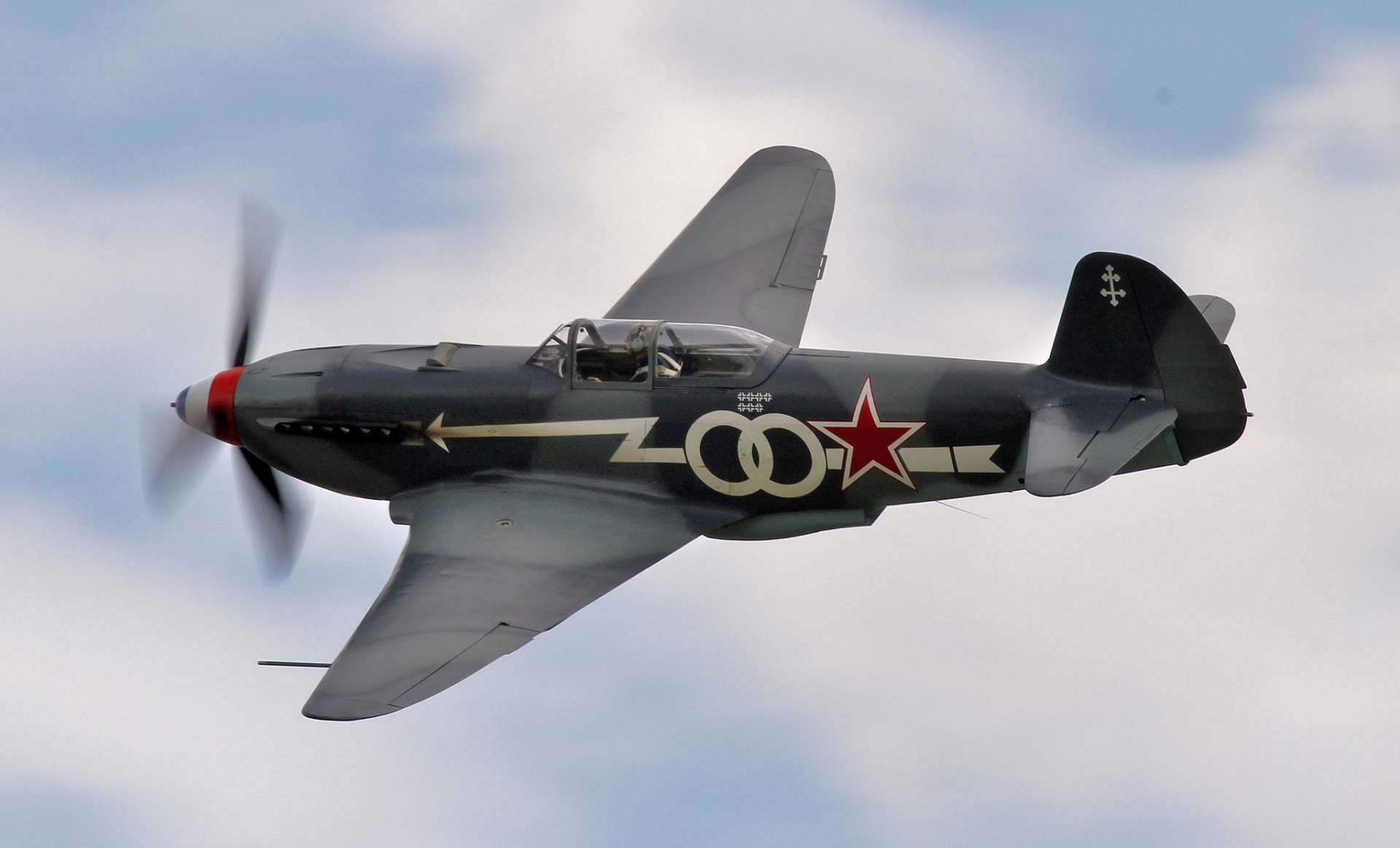Breaking News
Russia reintroduces WWII Yak-3 fighter as AK-3 at Army 2024 exhibition.
At the Army 2024 exhibition, the Russian A. Kemenov Design Bureau, established in 2020 and based in the Ruza area of the Moscow Region, presented the AK-3 aircraft, a modern replica of the Yak-3, a notable aircraft from World War II. The AK-3 maintains a silhouette reminiscent of its historical predecessor while incorporating modern materials and technology. While preserving the general design elements of its historical predecessor, the AK-3 has been updated to meet contemporary aviation needs, including the addition of a two-seater cockpit, a significant modification from the original single-seater Yak-3.
Follow Army Recognition on Google News at this link

While preserving the general design elements of its historical predecessor, the AK-3 has been updated to meet contemporary aviation needs, including the addition of a two-seater cockpit, a significant modification from the original single-seater Yak-3. (Picture source: Russian social media)
A key distinction between the AK-3 and its historical counterpart is its enhanced safety features. The aircraft is equipped with the KS-100 high-speed parachute system, produced by the Russian company MVEN, which is intended to improve safety during flight operations.
Constructed from composite materials, the AK-3 integrates modern avionics and flight instruments into its design, while also featuring an extended canopy to accommodate dual controls. These modifications allow the AK-3 to be used for flight and aerobatics training, as well as for demonstration tasks and film production.
This modern version of the Yak-3 is capable of reaching a maximum speed of 410 kilometers per hour, with a cruising speed of 340 kilometers per hour. The aircraft's stall speed is 120 kilometers per hour, and it can achieve a rate of climb of 15.5 meters per second. The AK-3 has a maximum flight range of 1,000 kilometers and an operational ceiling of 4,000 meters. For takeoff, the aircraft requires 406 meters, while landing requires 430 meters. The maximum takeoff weight is 1,300 kilograms, and the aircraft is designed to handle overloads ranging from -6 to +8G, enabling its use in air races and air shows.
The AK-3 is part of a broader initiative by the Kemenov Design Bureau to develop a series of modern platforms inspired by historical Soviet fighters from the late 1930s and 1940s. This platform allows for the standardization and unification of the production process, which is intended to accelerate manufacturing, simplify processes, and reduce costs.

The AK-3's maximum takeoff weight is 1,300 kilograms, and the aircraft is designed to handle overloads ranging from -6 to +8G, enabling its use in air races and air shows. (Picture source: Russian social media)
The Yakovlev Yak-3 was developed by the Soviet Union during World War II to address the need for a lightweight, maneuverable fighter capable of challenging German aircraft on the Eastern Front. The Yakovlev design bureau, under Alexander Yakovlev, focused on creating a fighter with a superior power-to-weight ratio by utilizing the Klimov VK-105PF-2 engine, which was derived from a licensed Hispano-Suiza design. The aircraft was designed with an emphasis on simplicity and effectiveness, featuring a streamlined airframe that contributed to its agility. Entering service in 1944, the Yak-3 was intended to help secure air superiority in key battles, particularly at lower altitudes where it performed best.
In combat, the Yak-3 demonstrated significant effectiveness, particularly in dogfights. Its light frame and powerful engine allowed it to outmaneuver many German aircraft, including the Fw 190 and Bf 109, especially below 4,000 meters. The Yak-3's combat performance made it a valuable asset in the Soviet air force, contributing to several successful operations. Soviet pilots found the aircraft responsive and relatively easy to handle, which allowed them to engage in combat effectively. The Luftwaffe, recognizing the Yak-3's capabilities, reportedly advised its pilots to avoid encounters with this aircraft below 5,000 meters, indicating the respect it garnered during its service.
The Yak-3's technical specifications reflected its role as a tactical fighter. It was equipped with a 20mm ShVAK cannon and two 12.7mm Berezin UBS machine guns, providing a balance between firepower and accuracy. The aircraft could achieve a maximum speed of 655 km/h and had a service ceiling of about 10,700 meters (35,105 feet). While its range was relatively short at approximately 900 kilometers, it was sufficient for the close-range dogfights in which it excelled. The lightweight construction that aided its maneuverability also led to certain vulnerabilities, such as potential delamination of plywood surfaces during high-speed maneuvers. Despite these limitations, the Yak-3 is regarded as a key element of the Soviet air force's success in the later stages of World War II.

The Luftwaffe, recognizing the Yak-3's capabilities, reportedly advised its pilots to avoid encounters with this aircraft below 5,000 meters, indicating the respect it garnered during its service. (Picture source: Russian social media)


























